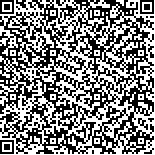| 引用本文: | 闫宾,李洪波,张杰,孔宁.不同微观组织Ti-4Al-2V钛合金板室温成形极限[J].哈尔滨工业大学学报,2020,52(5):148.DOI:10.11918/201906058 |
| YAN Bin,LI Hongbo,ZHANG Jie,KONG Ning.Forming limit of Ti-4Al-2V titanium alloy plate with different microstructures at room temperature[J].Journal of Harbin Institute of Technology,2020,52(5):148.DOI:10.11918/201906058 |
|
| 摘要: |
| 钛合金室温成形由于其加工成本低,受到了越来越多的关注.不同微观组织的钛合金成形性能差异很大.在钛合金板室温成形有限元仿真中,成形极限图是评价成形能力和判断材料失效的基础.然而,在获取材料成形极限时需要进行大量的试验,过程非常耗时和繁琐.为了降低实验成本、缩短开发周期,本文以材料失效点主应变二次导数变化的断裂准则,采用数值模拟与断裂准则相结合的方法获得不同微观组织的Ti-4Al-2V(TA17)钛合金板成形极限图.用单向拉伸、凸模胀形和圆杯拉深试验对有限元仿真进行对比验证,得到的试验结果和有限元结果相一致,表明有限元仿真得到的成形极限图的正确性.建立并对比了三种不同微观组织的TA17钛合金的成形极限,分析了微观组织对室温成形极限的影响,发现具有等轴组织的TA17钛合金成形极限最优.根据试样的断口形貌图也可以看出,等轴组织成形极限最优.为TA17钛合金板材冲压成形等后续工作奠定基础.对其他牌号钛合金在不同热处理工艺下得到的微观组织的成形性能研究有指导意义. |
| 关键词: 成形极限 钛合金 冲压 有限元 微观组织 |
| DOI:10.11918/201906058 |
| 分类号:TG389 |
| 文献标识码:A |
| 基金项目:中央高校基本科研业务费专项资金(FRF-TP-18-011A2); 国家重点研发计划(2016YFB0301204); 国家自然科学基金(51605026) |
|
| Forming limit of Ti-4Al-2V titanium alloy plate with different microstructures at room temperature |
|
YAN Bin,LI Hongbo,ZHANG Jie,KONG Ning
|
|
(School of Mechanical Engineering, University of Science and Technology Beijing, Beijing 100083, China)
|
| Abstract: |
| Titanium alloys forming at room temperature has attracted increasing attention due to its low processing cost. As is known, titanium alloys with different microstructures present different forming properties. The forming limit diagram is the basis to study the material failure and forming ability in the numerical simulation of titanium alloy plate forming at room temperature. However, to obtain forming limit requires numerous experiments, which are expensive and time-consuming. In order to reduce the experimental cost and shorten the development cycle, a feasible progression-dependent method based on the finite element (FE) simulation was adopted to determine the process from localized necking to fracture, which was also used to predict the forming limit diagrams of TA17 titanium alloy plate with different microstructures. The FE simulation results of the forming limit were compared with those of uniaxial tensile test, punch bulging test, and round cup drawing test. The results verified the correctness of the FE simulation results. Moreover, the forming limits of three TA17 titanium alloys with different microstructures were compared, and the effect of microstructure on their forming limits at room temperature was analyzed. Results show that the TA17 titanium alloy with the equiaxed microstructure provided the best performance on the forming limit, which was also supported by the fractographs of the samples. This work sheds light on the research on the forming properties of titanium alloys microstructures produced by different heat treatment processes, and establishes a foundation for the subsequent work on the stamping of TA17 titanium alloys. |
| Key words: forming limit titanium alloy stamping finite element (FE) simulation microstructure |







